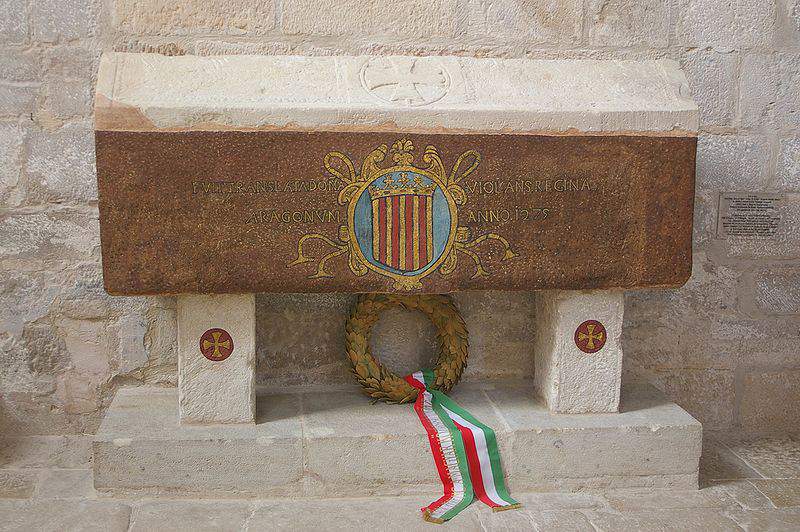Get to know the Hungarian queen, who is celebrated in Spain up to this day

Did you know that there is a Spanish city with a nine-day-long celebration every year that culminates with the locals laying a wreath on the statue of the onetime king of Aragon and his Hungarian wife?
According to the Kupakői Paprika Blog, this is a true story. The city of Castellón de la Plana can be found in Valencia Province in Spain. The founding of the city is celebrated every year between the 23rd of February and the 2nd of March. The nine-day celebration is called Magdalena. The highlight of the festivity is when locals lay a wreath on the statue of the founders of the city: James I and Violant of Hungary/Jolánta.
The truth is that not many Hungarians know about her. If mentioned, she’s probably referred to as Jolánta or Jolán. She was probably born between 1215 and 1219 as the daughter of King Andrew II and his second wife Courtenay Jolán (Yolande).
She grew up in the court according to the habits of the era, meaning that she learned Latin at an early age. Moreover, she was an excellent chess player. It is believed that playing board games was her favourite free time activity. But how did the Hungarian princess get to Aragon?
In that time, it was decided by Pope Gregory IX who Christian princesses had to marry.
Naturally, the choices were always based on political and dynastic interest. This is how the daughter of Andrew II ended up marrying James I the Conqueror.

It was quite a troubled time in Spanish history, not to mention that King James got divorced not long before. Divorces were quite rare back then, but it was said that his first wife decided to enter a convent. Finally, the pope broke up the marriage due to “close blood-relationship”. You might be wondering why this didn’t turn out earlier, but as we know, the habits were different at that time.
So the King of Aragon and the Princess of Hungary got engaged in 1234 through representatives. The couple only met on their wedding day. A big cortege accompanied the princess to Barcelona, the centre of the royal court.
The wedding was held on the 15th of December, 1235 in the cathedral of the city.
Violant of Hungary soon found her place and account in the Aragonese court. Even though King James I wasn’t the perfect example of loyalty, he very much appreciated his wife, because she was perfect for him: noble, beautiful, kind and most importantly, fertile.
The queen gave birth to ten children, several in the battlefield because she usually accompanied her husband on his conquering wars. But she was not only an escort; it is believed that she was also an advisor. The king regularly asked for her advice, even on military issues.
Out of her ten children, eight lived to be adults, which was a huge thing in the 13th century. Her oldest daughter, Jolán, became the queen of Castile, her oldest son, Peter, became the king of Aragon, his other son, James, the king of Mallorca, another daughter, Isabel, the queen of France etc. The long and short of it is that they all got on in life.
Violant of Hungary died in the October of 1251 after a long sickness.

Based on her testament, her husband distributed clothes among a thousand poor men and food among thirty thousand, while she also gifted monasteries and nunneries with pieces from her heritage. Her remains were placed in the Monastery of Santa María de Vallbona.
Featured image: Wiki Commons By By Vcarceler
Source: http://cabe.blog.hu/





